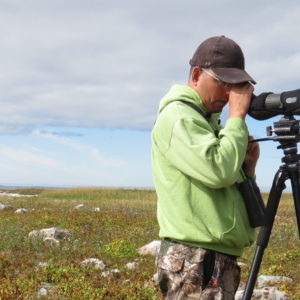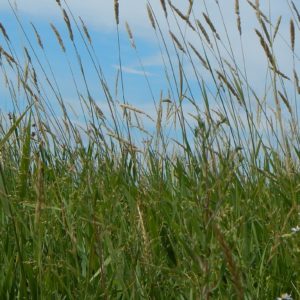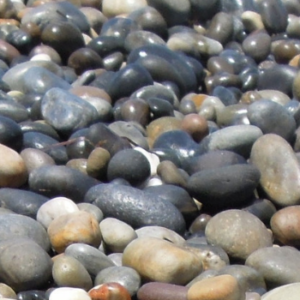Charlton Island Shorebird Expedition 2016 – Part 1
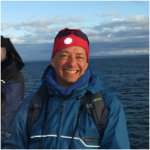
Ted Cheskey
Senior Conservation Manager – Bird Conservation, Education & Networks
A joint project of Nature Canada, Environment Canada, the Cree Regional Government, the Waskaganish Cree Trappers’ Association and Eeyou Marine Region Wildlife Board
We met, up to 16 of us at times, in the small board room of the Cree Trappers Association of Waskaganish to talk shorebirds. Myself and Aurelie Bourbeau-Lemieux led an all-day workshop that covered subjects from how to estimate numbers of birds in a flock, to how to use a spotting scope, to the difference between precocial and altricial young amongst species of birds. The workshop participants included the expedition team members as well as some local residents of Waskaganish. The outdoor component of the workshop was in mid-afternoon when the heat, pounding sun and heavy sky chased any good bird into cover, but everyone seemed satisfied with the event.
The next day was spent in a flurry of last minute organizing of equipment and preparing for an evening departure when the tides would be high. We exited the Rupert River into Rupert Bay around 8 pm, pilots at full throttle, heading for a window of light between two merging thunderstorms. Bill Jolly, our host and one of our boat pilots and Clayton, his grandnephew, the second pilot, know these waters extremely well, and had us at the Jolly camp by 10 pm, in time to catch the last moments of light while we transported our gear to the cabins. The second crew, who were slightly delayed after us, didn’t fare as well and were forced to seek refuge from the storm in a camp less than halfway to their destination of Boatswain Bay. Unfortunately, their shorter expedition was compromised by rough seas and rain the next day as they remained storm bound and had to return to Waskaganish early.
Our goal was to determine, through daily counts, the populations of bird species with a focus on shorebird species on Charlton, Carey, Danby and Strutton Islands, and their surrounding waters, as well as in Boatswain Bay. The outcome of this project could support nomination of one or more new Important Bird and Biodiversity Areas (IBA) and possibly an extension to the proposed Western Hemisphere Shorebird Reserve Network site for Southern James Bay.
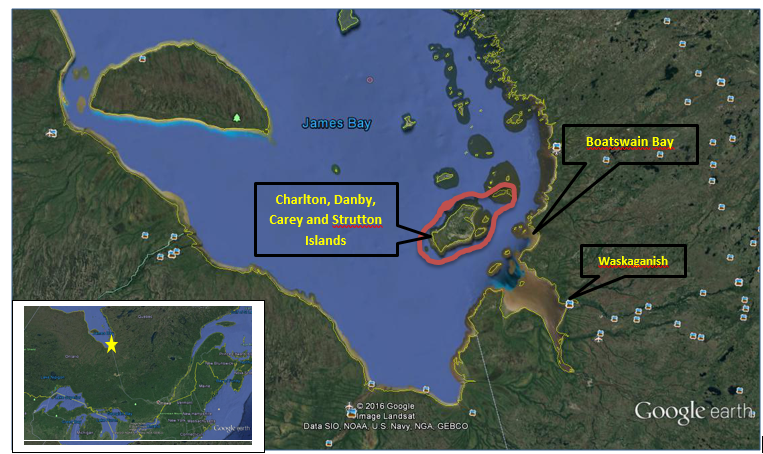
A map of the area where the project took place.
Though July 27 was cool and rainy, we started into the survey work immediately by heading across the channel to Danby Island, where we were dropped on the far side and headed off in two groups in separate directions to cover the island’s approximately 18 kilometre circumference. Our survey protocol involved counting all of the birds encountered as we walked the coastline along the mud flats, beach or rocky coastline as best we could. We were always in groups of at least two, one of whom was armed as a safety precaution. The biggest safety concern was from polar bears, which are known to den on some of the islands in this area on occasion. Both groups saw many Endangered Red Knots. Our group was fortunate to spot one flock of 128 individuals, including a bird with a white flag, likely meaning that it was banded on the Mingan Islands in the lower St. Lawrence. We also heard 4 Yellow Rails, also a Federal Species at Risk and a first for the islands. With the 60 Knots observed by the other group our day total for the species was 188 on day 1, already surpassing the IBA threshold for this species! Many polar bear tracks were also observed in the mud flats around the island. The teams were on high alert.
The next day was also cool, with the temperature staying in the low teens. Myself, Jordan Rabbitskin and Clayton Jolly covered the north eastern tip of Carey Island, having to navigate through heavy fog and avoid dangerous rocks to find a safe drop off. The five hour shorebird survey produced low numbers of shorebirds but 2000 rafting Black Scoters were counted offshore! The islands are surrounded by rocky reefs with significant mussel beds that support large numbers of sea ducks. We also saw hundreds of Common Goldeneye. We followed caribou tracks along the coastline for the entire walk. The night before Marc-Antoine had spotted a caribou from the camp that many of us were able to see!
The other team went to Carey Island, a few kilometres to the north of Danby. Their day was a bit more dramatic. While it included spotting some good sized flocks of Red Knots, adding up to about 190 individuals, their memorable moment was an encounter with a Polar Bear. Just prior to meeting up with the bear, they saw more and more signs of it, including fresh tracks, and a flattened trail in the grass that resembled the sort of trail that an ATV would make, but without the tires! Fortunately the encounter was peaceful as the bear and the group eventually headed off in separate directions. Marc-Antoine Montpetit had the wherewithal to take several excellent photos of the bear during the encounter.
[one_third]
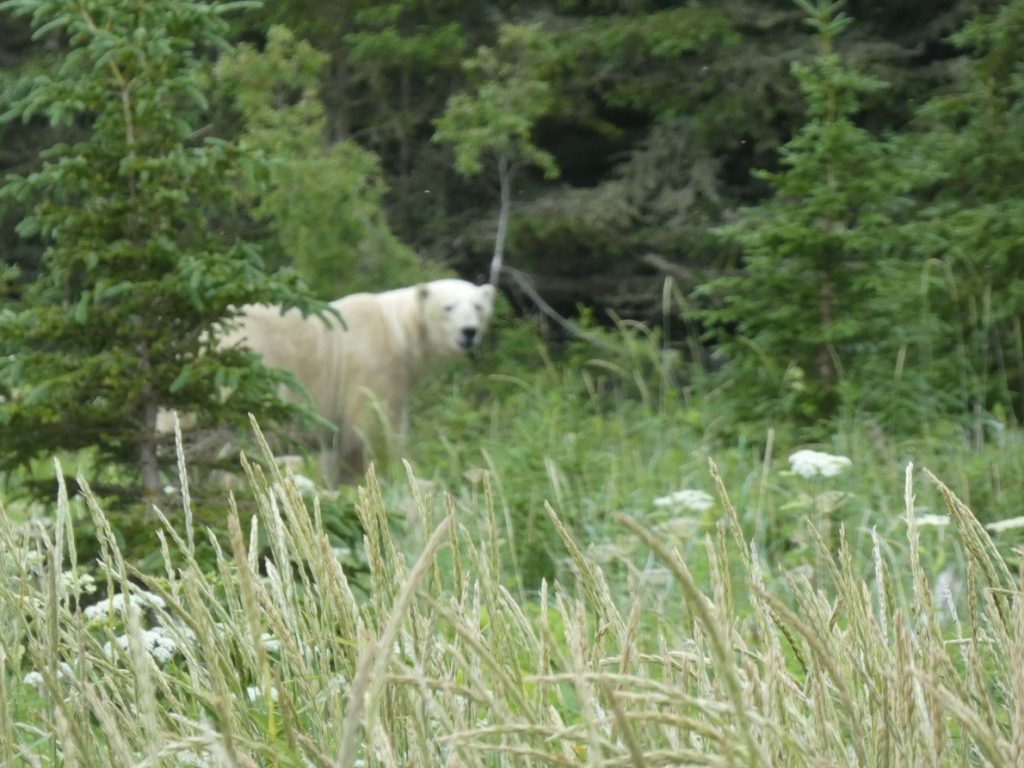
Figure 1: Photo by Marc-Antoine Montpetit
[/one_third] [one_third]
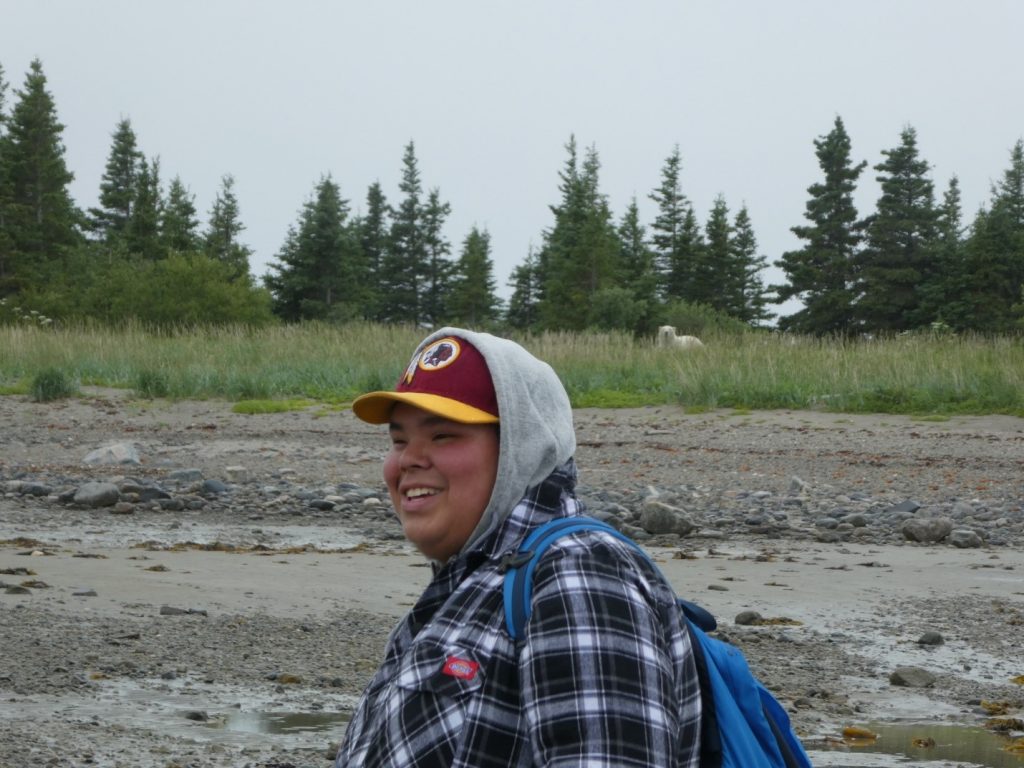
Figure 2: Jeremy Stevens appears happy about the Polar Bear in the background. Photo by Marc-Antoine Montpetit
[/one_third] [one_third_last]
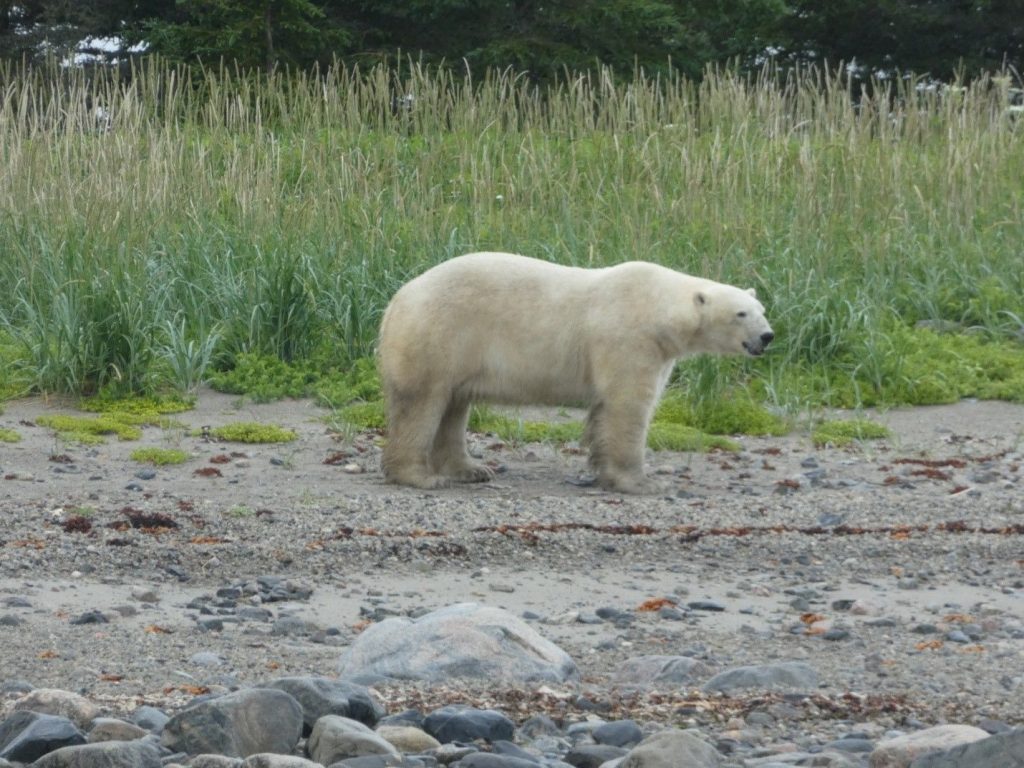
Figure 3: Bear on the beach. Photo by Marc-Antoine Montpetit
[/one_third_last]
The following day, Marc Antoine, Jeremy and I hiked the large v-shaped bay to the north-east of the base camp. We counted approximately 2000 Semipalmated Sandpipers and an array of other species, but no Knots this time. Marc Antoine found a family of Horned Grebe, and also a family of Red-necked Grebe. Both species are hundreds of kilometres outside of their known breeding range. In fact Marc-Antoine located at least four separate families of Horned Grebe on Charlton. The nearest known Quebec breeding population of this species is on the Iles de la Madeleine, a few thousand kilometres to the east, and in Ontario on the Manitoba-Ontario border, about a thousand kilometres to the west. As well. many polar bear (clearly an adult and a cub) and caribou tracks were observed in the exposed mudflats.
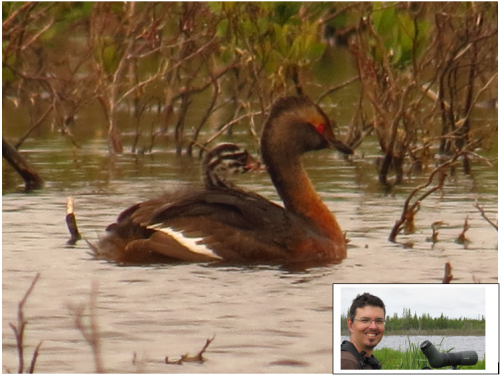
Figure 4: Horned Grebe with baby on back with inset of Marc- Antoine Montpetit, proud “finder” of the Charlton grebes! Photos by Ted Cheskey
Continue on to read about the second part of this adventure!

